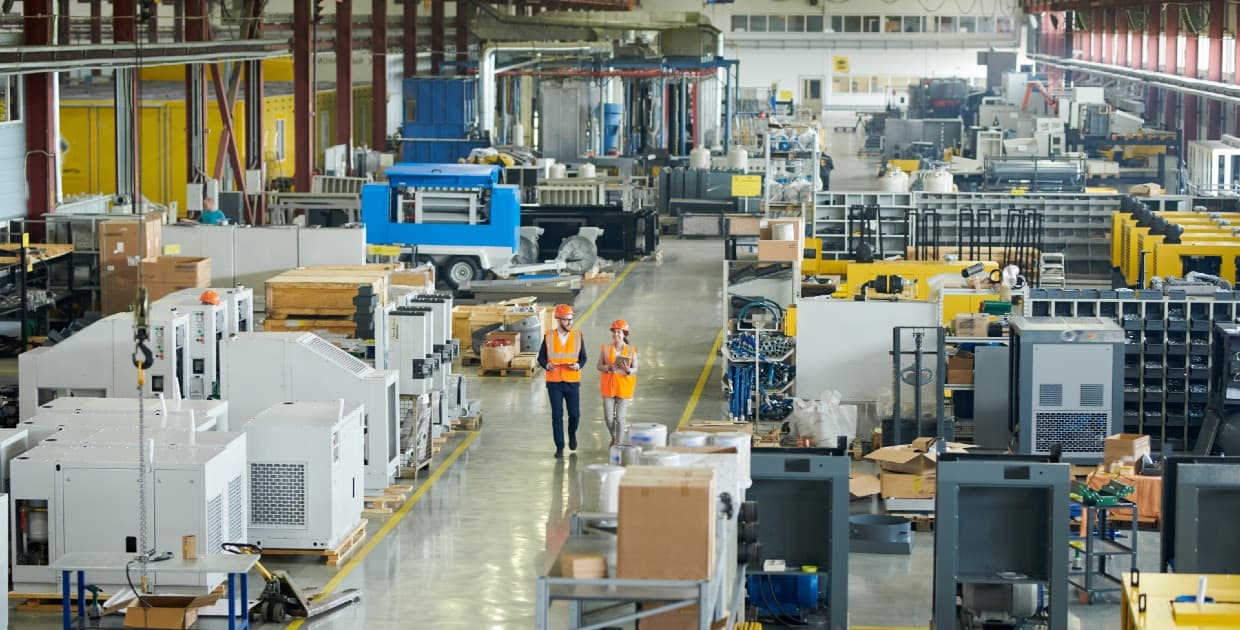In today’s fiercely competitive business environment, streamlining your manufacturing process is essential for boosting efficiency, cutting costs, and maintaining a competitive edge. However, the path to streamlined operations can often seem daunting. The good news is that optimizing your manufacturing processes doesn’t have to involve a complete overhaul; even small adjustments can lead to significant improvements in productivity and profitability.
This blog post will outline five simple yet effective strategies that can help you streamline your manufacturing process. Each tip is designed to be straightforward to implement yet powerful enough to make a noticeable impact. Whether you’re looking to optimize workflow, enhance quality control, or reduce downtime, these tips will provide vital guidance tailored specifically for manufacturing contexts.
Contents
Implement Lean Manufacturing Principles
Introducing lean manufacturing principles can significantly boost efficiency by minimizing waste and maximizing productivity. Focus on identifying areas in your production line that do not add value—such as overproduction, waiting times, and unnecessary transportation—and take steps to eliminate these inefficiencies. Techniques such as 5S (Sort, Set in order, Shine, Standardize, Sustain) encourage organization and cleanliness, which can also enhance performance and safety on the floor. A useful resource on lean methodologies is mexico manufacturing, which discusses streamlined production techniques applied in Mexico’s vibrant factory settings.
By removing unnecessary steps and optimizing worker responsibilities, workers are more able to focus on their tasks without disruption. Regular training and workshops about these principles can help ingrain a continuous improvement culture within your team.

Adopt Automation Technologies
Automation is key to reducing labor intensive tasks and increasing precision in manufacturing processes. Implementing advanced technologies such as robotics, AI-driven machinery, or even simpler automated systems can lead to significant reductions in time and human error. This transition does not necessarily require a hefty upfront investment; many small-scale automation tools are now available that are designed specifically for modest-sized operations.
Start small by automating repetitive tasks that require little human intervention, which can also help to free up your workforce for more critical thinking oriented roles, thus adding value elsewhere within the operation.
Enhance Supply Chain Management
Optimizing your supply chain is another crucial strategy for streamlining manufacturing processes. Efficient supply chain management involves synchronizing your input needs with supplier capabilities, which helps in reducing material shortages and minimizing excess inventory costs. Leveraging supply chain software or collaborative platforms can provide real-time data analysis and communication tools necessary for responsive decision-making.
Consider adopting just-in-time inventory practices which can lower storage space requirements and minimize handling costs without sacrificing the security of supply necessary for meeting customer demand spikes.
Maintain High Quality Control Standards
Poor quality control can lead to waste of resources and reduced customer satisfaction. Implementing robust quality control systems throughout every phase of the manufacturing process ensures that any deviations from standards are detected early and addressed swiftly. Investing in advanced inspection equipment and training staff on its proper use can significantly enhance the efficacy of your quality audits.
Regularly review and refine your quality assessment procedures to keep pace with changes in production techniques or new regulatory requirements. Strong quality control systems not only improve products but also enhance the overall reputation of your brand.
Utilize Data & Feedback Effectively
Real-time data collection and feedback analysis are integral components of a modern manufacturing process. Sensors and ERP (Enterprise Resource Planning) systems can collect crucial data points like machine efficiency rates and production bottlenecks in real-time. This data enables managers to make informed decisions quickly to prevent delays or downtime.
Moreover, actively seeking feedback from both employees on the floor and customers after sale can offer unique insights into potential areas of improvement across your processes. This constant loop of testing, feedback analysis, and adaptation fosters an environment of continuous improvement.
In conclusion, streamlining your manufacturing process requires attention to detail, strategic planning, and commitment to continuous improvement. By implementing these five tips—embracing lean principles, increasing automation adoption, sharpening supply chain management, maintaining rigorous quality controls, and leveraging data effectively—you’re well on your way to enhancing efficiencies and driving sustainable growth in your business.
The journey towards streamlined operations is ongoing; always keep an eye out for new innovations or methodologies that could further enhance your manufacturing setup. Strive towards making incremental improvements regularly—over time these will compound into substantial enhancements in both operational performance and business outcomes.

